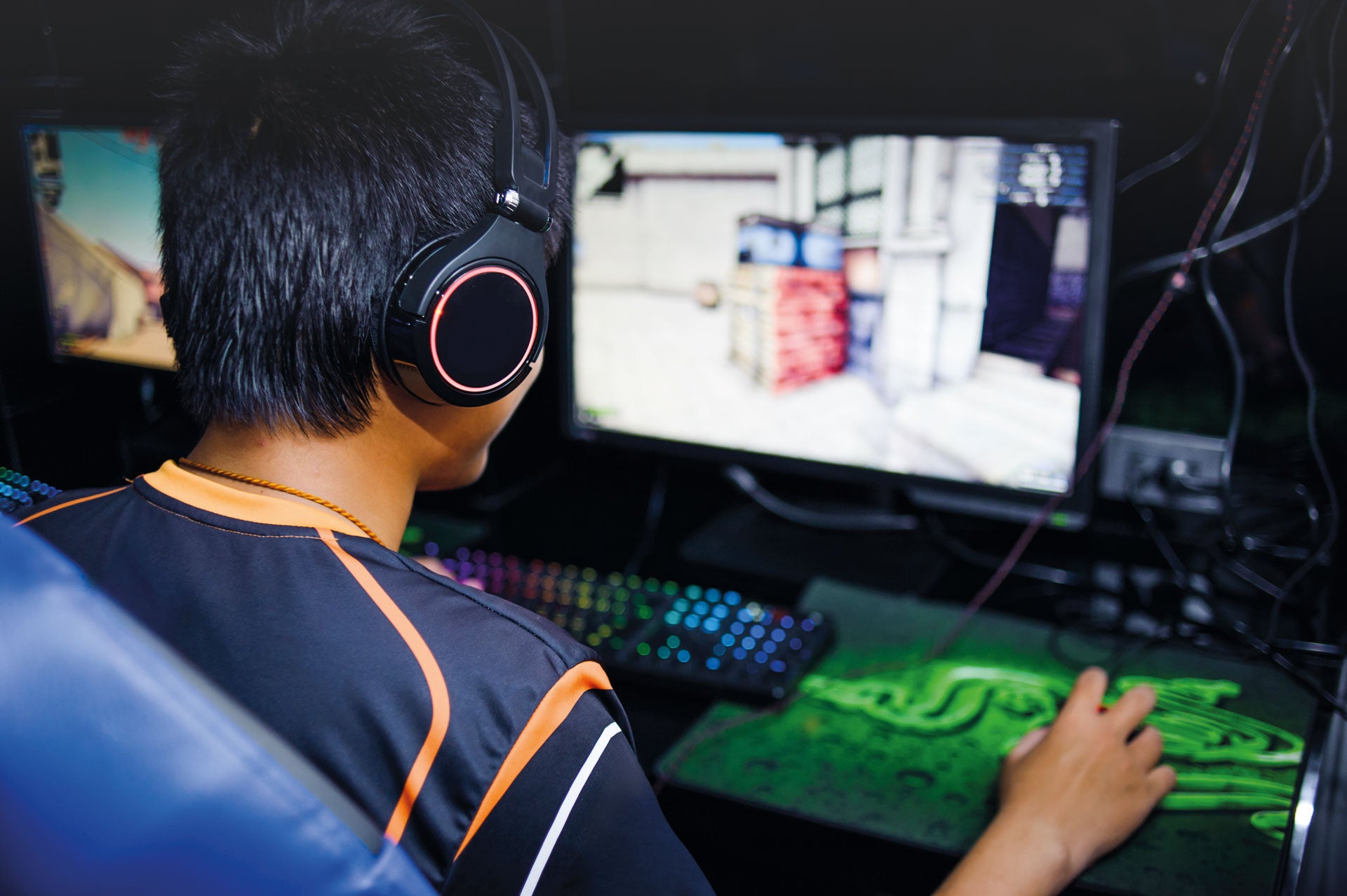If you’ve been looking at displays with high refresh rates, you’ve probably noticed there is a battle between FreeSync vs. G-Sync and wondering if one is better than the other.
Both are known as adaptive-sync technologies. These are important when it comes to your display's refresh rate. For example, you can have issues when there is a problem between your graphics card and the refresh rate. Adaptive-sync technology helps prevent that.
To better understand this technology, we'll dive into how adaptive-sync technologies work and see who comes out as the winner in the FreeSync vs. G-Sync battle.
FreeSync vs. G-Sync History Lesson: V-Sync Display Technology
Before we dive into the ultimate battle, it's essential to understand how we got here today. V-Sync, which stands for vertical synchronization, is what initially prevented screen tearing.
If you ever experienced screen tearing, you know exactly what we mean. When the monitor’s refresh rate can’t keep up with the graphics card, you get distorted, misaligned images on your screen.
V-Sync puts a cap on the frames per second (FPS) so that way your graphics cad can adjust based on the refresh rate of the monitor. For example, V-Sync is best used for 60Hz monitors, so if your GPU is sending more than 60 FPS, V-Sync will cap the FPS to 30. However, while it significantly reduces screen tearing, it can cause a lag and make images appear choppy.
While V-Sync works fantastic with older monitors, they aren't the best when it comes to high-end graphics cards or high refresh rates. And just because you may have a high-end graphics card and a high refresh rate doesn’t mean you won’t have any issues.
And thus, we welcome FreeSync and G-Sync.
What Are Adaptive-Sync Technologies?
Both FreeSync and G-Sync are adaptive-sync technologies, and in essence, are the same. However, instead of having the display's refresh rate dictate the performance, adaptive-sync technology allows the graphics card to take the lead and dictate the FPS. This results in a much better experience.
So, for example, if you had a GPU sending 70-90 FPS, V-Sync would cap it at 60 FPS. When you have FreeSync or G-Sync, it will make the display refreshes in that 70-90Hz range, constantly syncing with the changes in the FPS.
What To Know About G-Sync
NVIDIA released G-Sync in 2013 as a way to synchronize your display with a graphics card. As a result, you have a much smoother experience and no screen tearing!
Plus, whenever the speed of the graphics processing unit (GPU) would ever get out of sync with the display refresh rate, G-Sync allows the graphics card to adjust its output.
This is a perfect solution for many monitors because the refresh rate is always better than the GPU output rate. However, when the two aren't synced, it can cause issues.
G-Sync also kicks to the curb other issues experienced with V-Sync thanks to its ability to manipulate a display's vertical blanking interval (VBI). This is the time in between when your display draws one frame and is ready to move on to the next one. With G-Sync, your graphics card can tell there is a lag and waits to send more info. This prevents any frame issues.
Really, the only downside to G-Sync is the price. You'll need an NVIDIA graphics card and a display equipped with G-Sync, which will cost about $200 extra.
What To Know About FreeSync
AMD released FreeSync in 2015 with the same goal: to reduce screen tearing due to display not syncing with the frame rate.
FreeSync, created for liquid-crystal monitors, allows manufacturers to incorporate this technology into their equipment without paying AMD royalties. This results in FreeSync displays costing less than G-Sync.
And usually, G-Sync displays only work with NVIDIA GPUs, and FreeSync displays only work with AMD GPUs. However, just recently, there have been some exceptions. Some FreeSync displays can work with NVIDIA GPUs.
For example, there are various Iiyama displays with FreeSync adaptive technologies that can work with NVIDIA GPUs. Such as the:
- Iiyama G-Master G2466HSU-B1 24” Fixed Stand Gaming Monitor
- Iiyama G-Master GB3266 QSU-B1 32” Curved LED Display
FreeSync vs. G-Sync: The Battle
Any gamer on a budget may automatically go for the FreeSync display and AMD graphics card because it will be less expensive than G-Sync. However, there are some possible drawbacks to FreeSync.
You could have issues because AMD doesn’t strictly monitor and enforce quality control like NVIDIA. FreeSync supports a specific frame rate range, and it will only work within a range specified by the manufacturer. You can check the display frame rate ranges supported by AMD by clicking here.
But the good news: Since FreeSync is "free," meaning it has open standards for manufactures to use, the good news is that there is a much more comprehensive selection of displays than G-Sync displays.
If you choose NVIDIA and G-Sync, you may have to spend a little more money, but you will be guaranteed a smooth and flawless performance.
FreeSync vs. G-Sync: Who Wins?
When it comes down to which adaptive technology wins the battle, it's based on your preference. If you want guaranteed performance, high-quality images, and a smooth gaming experience, G-Sync is the choice for you if you have the extra money. Finally, you'll have a gaming experience that won't disappoint every single time.
If you want an excellent performance, high image quality, and don't mind the possible screen tearing, FreeSync can work just as well if you’re on a budget. Both adaptive technologies are significant improvements over V-Sync.
Let The Monitor Lounge Sync You With The Perfect Gaming Display
At The Monitor Lounge, we carry the best lineup of Iilyama displays for all your gaming needs. If you ever have any questions about selecting the best gaming monitor, please reach out to us.
Our expert team would be more than happy to help you, so you choose the ultimate gaming monitor. You can then place your order easily online, and we safely ship your order right to your front door.

